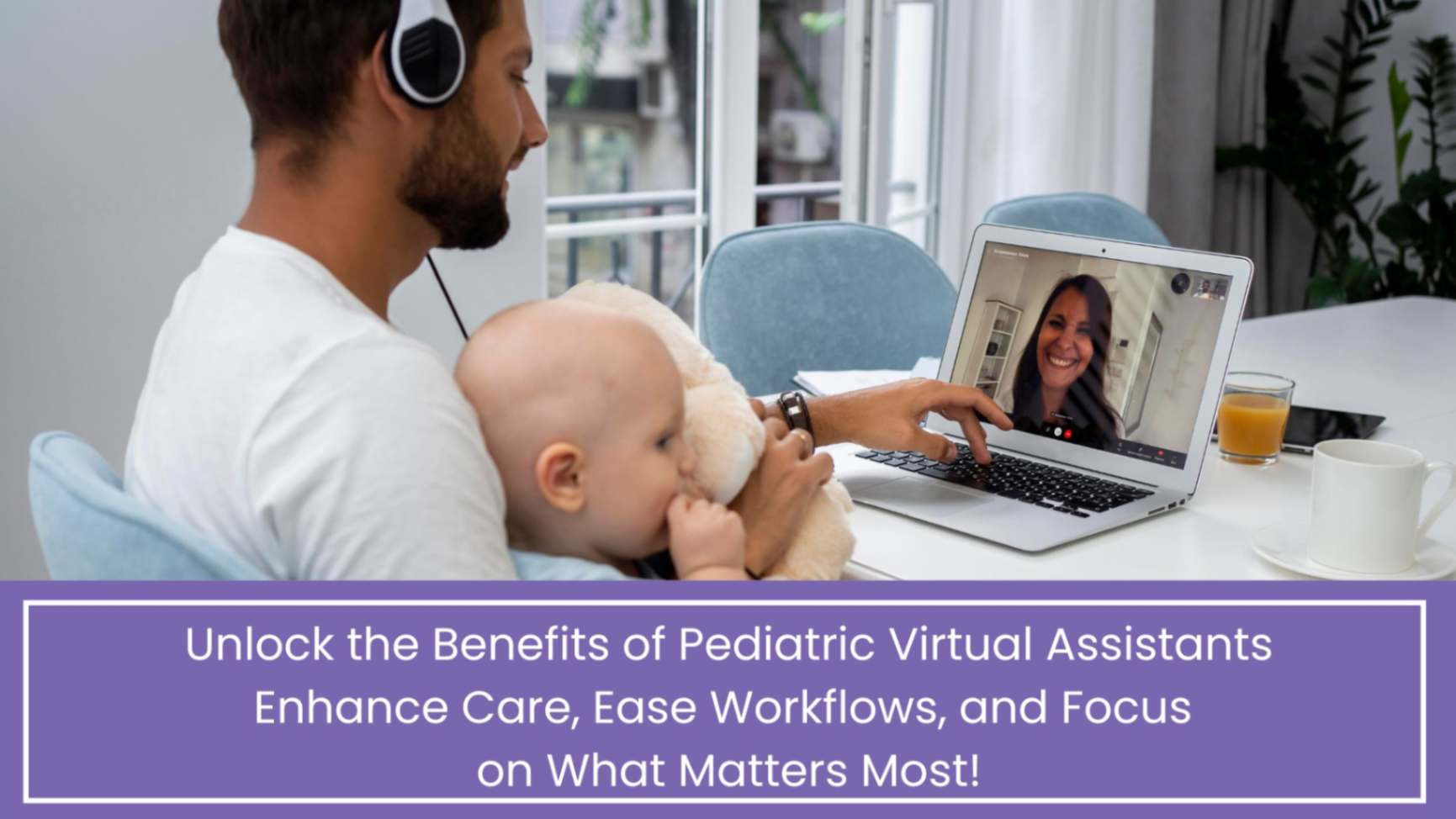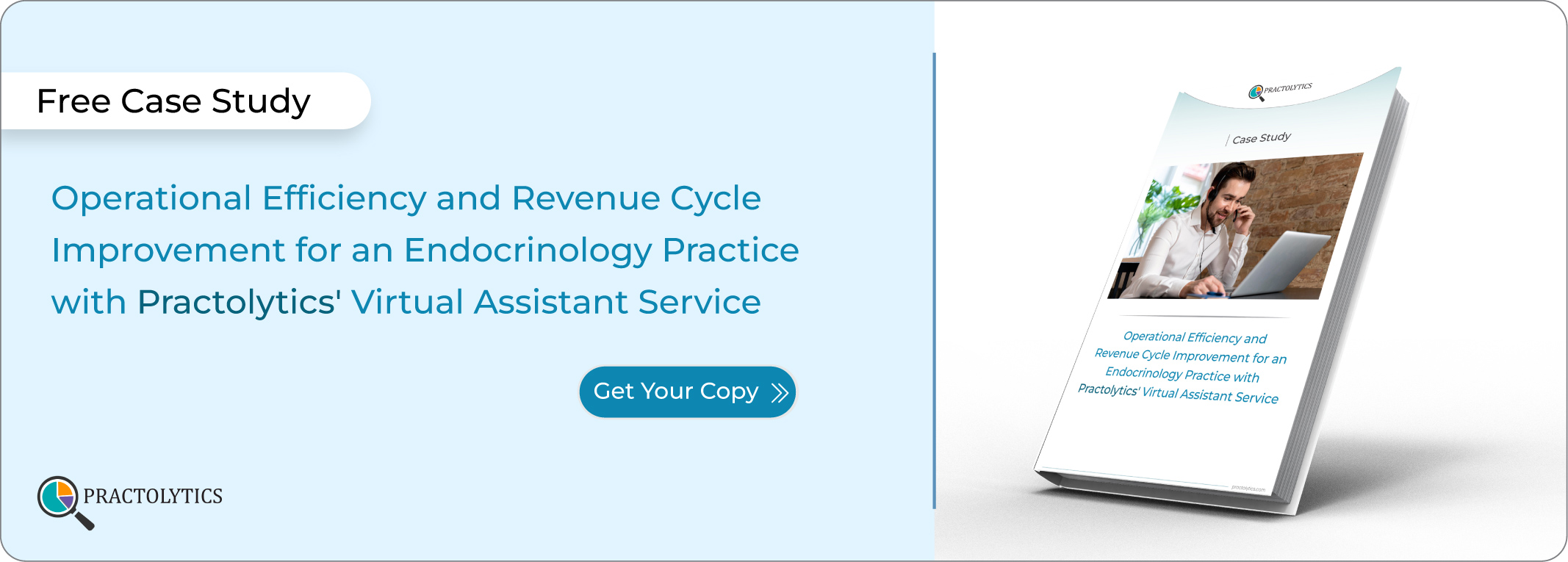Benefits of a Pediatric Virtual Assistant
A pediatric virtual assistant (PVA) is a remote, trained support professional with expertise in child-focused healthcare operations. Unlike generic virtual healthcare assistants, the benefits of a pediatric virtual assistant speak to the language of your clinic and handle well-child visits, growth chart tracking, vaccine scheduling, and usual parental questions. Incorporated into the EMR system, communication tools, and billing system, Pediatric Virtual Assistant acts just like a dedicated back-office employee who answers calls, chats, or texts. This digital teammate helps with practice with non-visit tasks and operational matters so that front-line staff can concentrate more on patient care.
1.Reducing No‑Shows & Optimized Scheduling
PVAs streamline scheduling by managing appointment slots, sending reminders, and filling cancellations via waitlists. Clinics have seen 30–40% fewer missed appointments, thanks to proactive notifications and 24/7 coordination. Less disruption from no-shows means more efficient workflows, fewer wasted slots, and improved access for patients.
2.Time Savings & Administrative Relief
Pediatric virtual assistant services audit shows a 40–60% reduction in administrative workload, freeing up staff to engage with patients instead of wrestling with insurance portals or paperwork. They take on data entry, form preparation, prior authorizations, billing follow-up, and meeting minutes—eliminating late nights at the office.
3. Better Parent Communication
Parents count on quick answers—fever advice, dosage questions, and follow-ups. PVAs triage inquiries, share clinic-approved guidance, and escalate urgent situations. They also send follow-up messages with age-specific content (like asthma or immunization reminders), improving engagement and outcomes. RVAs connected to trusted systems build confidence: caregivers say confidential, well-structured interactions matter most.
4.EMR Updates & Vaccination Tracking
Virtual Medical Assistants maintain accurate, up-to-date records—inputting demographics, lab results, and growth metrics, and ensuring immunization charts are current. They run audits to clean duplicates or missing elements, helping maintain compliance and operational clarity.
5.Insurance/Billing Support
Insurance verification, claims submission, and denial follow-ups can bog down even small clinics. PVAs handle much of this—pre-authorizations, eligibility checks, and patient statements—shrinking denials, speeding reimbursements, and sustaining healthy cash flow. One clinic cut claim rejections by 25% and boosted revenue by nearly 12% .
6.Telehealth Readiness & Continuity of Care
PVAs support virtual visits by ensuring families can connect, sending prep instructions, and following up post-consultation. As telehealth grows—especially post-pandemic—they ensure smooth, accessible remote care for families—reducing technical friction and improving patient retention.
7.Personalization & Chronic Care Support
PVAs personalize follow-up for chronic conditions or developmental needs—sending therapy reminders, monitoring asthma check-ins, and guiding behavioral health follow-up. They can even adapt messaging for different languages and cultures, connecting families to the right resources.
8.Data Insights for Operational Strategy
Because PVAs log interactions—call reasons, common queries, billing trends—practices can analyze and optimize operations. For example, noticing recurring afternoon fever calls could prompt proactive workflows or staff adjustments. These analytics also surface opportunities to improve satisfaction and reduce bottlenecks .
9.Cost-Effective and Scalable
Compared with hiring full-time staff, PVAs reduce overhead—no need for extra office space, equipment, benefits. Services are flexible: scale up during flu season or peak periods, and scale back in quieter months. Many practices recover their PVA investment in weeks via reduced overtime and reclaimed revenue .
10.Enhanced Patient Satisfaction & Trust
Consistent, empathic communication and smooth administrative workflows translate into happier families. Clinics report 10–15% increase in patient satisfaction and more positive word-of-mouth. Parents feel valued when their calls are answered and questions are addressed promptly .
Table of Contents
Challenges & Implementation Tips
PVAs are powerful but need structure.
- Training: Staff must understand how to interact with virtual teammates.
- Security: Choose HIPAA-compliant platforms with encryption, role-based access, and logging .
- Workflow Design: Define escalation rules—for when to route to clinicians vs automated responses.
- Change Management: Smooth adoption requires staff buy-in and clear protocols.
A Day with a Pediatric Virtual Assistant in Action
- 08:00: Reminder texts go out; two families reschedule via link.
- 10:00: EMR flagged missing immunization data—PVA updates chart.
- 13:00: Parent inquires about rash—PVA sends instructions and logs for nurse review.
- 15:00: Billing team alerted to a denied claim; PVA starts resubmission.
- 19:00: Parent messages about fever; PVA triages and, per protocol, escalates for nurse callback.
- Next morning, the practice manager reviews the PVA dashboard—identifying a drop in vaccine scheduling—and steps in with outreach.
Behind the scenes, you’re delivering compassionate, efficient care—without administrative overload.
Choosing the Right Pediatric Virtual Assistant
When selecting a partner, look for:
- The system should understand challenges presented by pediatric schedules, well-child visit life cycles, and parental behaviors.
- Integrate EHR and billing systems for a seamless workflow so double data entry can be prevented.
- HIPAA certified and secure: encryption, audit trail, role-based control.
- Custom scripting and escalation: custom messaging and triage methods.
- Flexible and scaling: The support can be scaled by time or function depending on need.
- Analytics and dashboards: continuous improvement and transparency.
- Onboarding and ongoing support: training for staff and updates to meet evolving needs.
Why Choose Practolytics?
Practolytics builds PVAs using real-world input from pediatricians and office managers. Our team ensures workflows are intuitive, empathetic messaging aligns with your brand, and all integrations are HIPAA-compliant. Built-in reporting and support help your practice grow—whether you’re a single clinic or part of a regional group.
Next Steps:
- Identify pain points. No-shows? Billing delays? After-hours calls?
- Start small: Pilot appointment reminders or billing support.
- Train your team: A few onboarding sessions go a long way.
- Monitor metrics: Track no-show rates, billing turnaround, and parent satisfaction.
Scale up: Add EMR maintenance, telehealth prep, and chronic care follow-ups.
Conclusion:
A pediatric virtual assistant is more than a cost-cutting tool—it’s an empathetic, accountable extension of your care team. Based on data, clinics using Pediatric Virtual Assistants see fewer no-shows, lower administrative burden, faster billing, and happier families. With scalable, secure, and child-focused support, PVAs like our Practolytics solution let you strengthen care without adding overhead. Interested in seeing how it works for you? Let’s connect and help your practice thrive—one family at a time.
Read More – From Chaos to Efficiency: A Small Practice’s Journey with a Virtual Assistant
Talk to Medical Billing Expert Today — Get a Free Demo Now!






